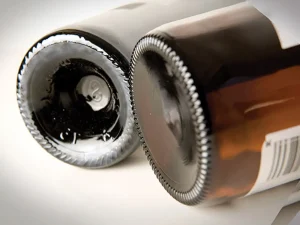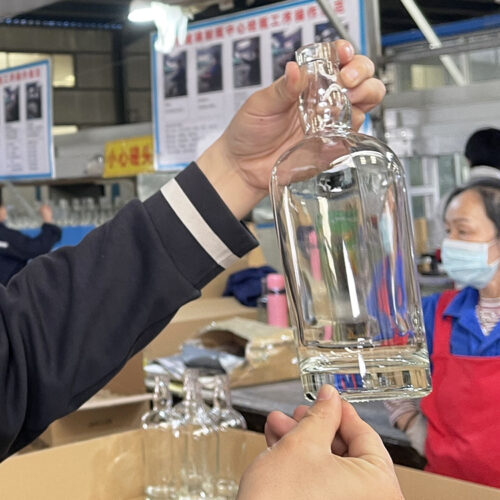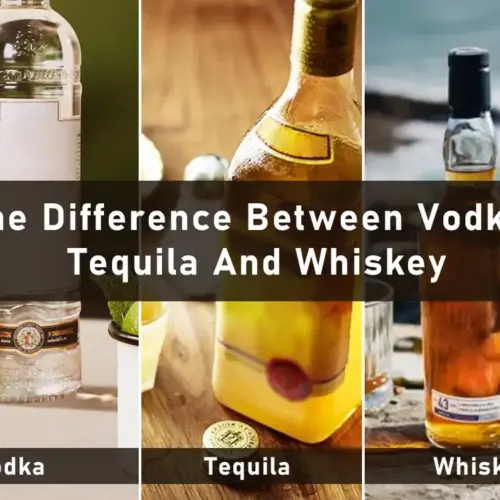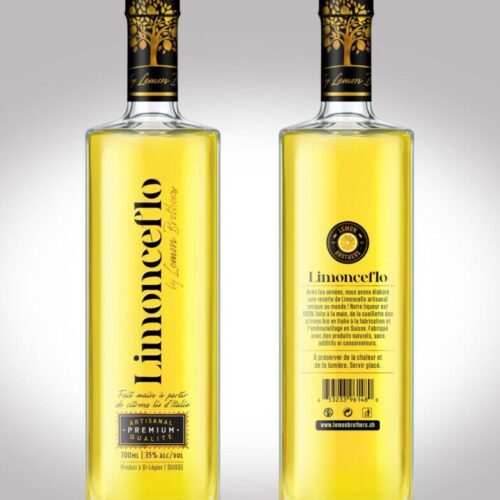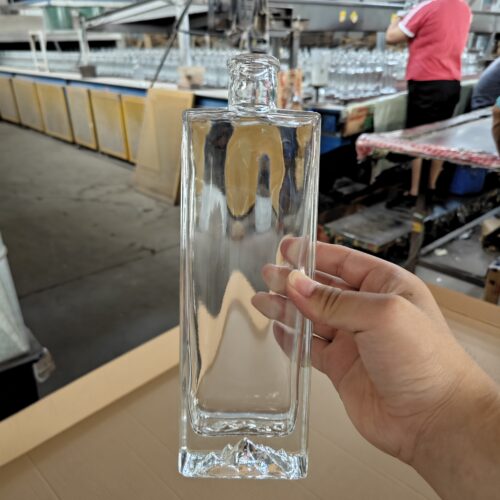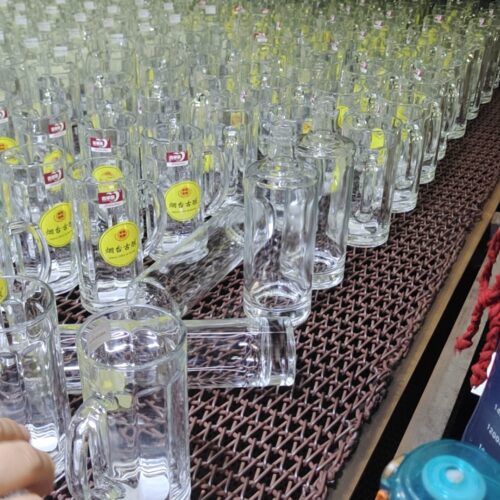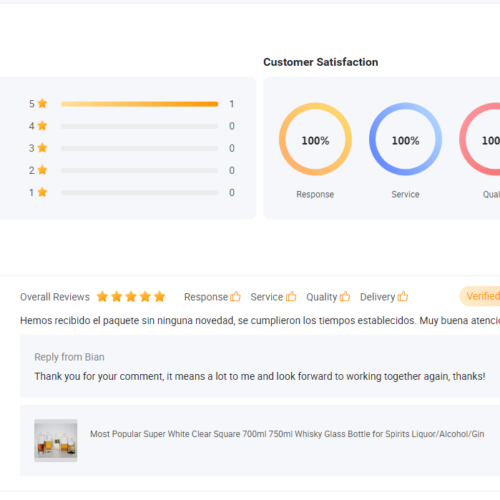Have you ever purchased a champagne bottle and noticed the indent at the bottom? However, the regular wine bottles don’t have much punt or dent. The question arises: why do champagne bottles have a dent in the bottom?
The champagne bottle dent generally confuses those new to the wine industry. I know many myths in the market regarding the punt of champagne bottles. However, you don’t need to worry, as this guide will debunk the myths. You’ll learn everything about the dent at the bottom of the champagne bottle and its purpose.
Overview of Champagne Bottle
The champagne bottles are unique in terms of their design and style philosophy. They have a long body with a slim neck and an indented base. They come in various sizes to cater to the needs of champagne lovers and customers with different budgets. For example, the 750 ml champagne bottle suits 3 to 5 persons.
On the other hand, a one-liter bottle is available for small family gatherings. Similarly, manufacturers also produce large champagne bottles such as Magnum and Jeroboam. Magnum bottles have a wine capacity of 1.5 L, while Jeroboam is around 3 L. Their usage is common for large family gatherings and events.
However, all these bottles have one thing in common: depth or punt at the bottom. Remember, the history of champagne wine is found in the Champagne region of France. Its main ingredient is grapes, which undergo different processes to make wine. Those processes include harvesting, extraction of juice, fermentation, and aging.
Why Do Champagne Bottles Have a Punt or Dent in the Bottom?
Punt, dent, groove – all these words refer to a depth at the base of champagne bottles. There are multiple reasons behind this depth indentation or concave shape. In the section below, I will explain each reason behind this dent.
1- Reduce Pressure
Champagne bottles are highly carbonated and contain carbon dioxide gas. This causes the pressure inside the bottle to be very high. But why do these bottles have higher CO2 concentrations? The answer to this question requires a detailed understanding of how champagne wine is produced.
Champagne wine undergoes several steps or processes during its production. One of those steps is secondary or double fermentation. In this step, yeast and sugar are added to the bottles, which then remain sealed. The yeast acts and converts sugar into alcohol. During this conversion, carbon dioxide is also produced as a byproduct.
However, as the bottle is super sealed, this gas does not have a passage to escape, so it dissolves into the wine. However, over time, the pressure keeps building up. This pressure is very extreme and can crack the wine bottle. Therefore, manufacturers keep a dent or punt at the base of champagne bottles.
This dent plays a key role in distributing the internal pressure evenly in the bottles. So, all the sides from top to bottom of the bottle face the same pressure level. As a result, the bottle does not break or crack. In short, the punt saves the bottles from cracking due to pressure caused by carbonation.
2- Helps with Sediment Collection
As I said earlier, the production of champagne wine involves additional fermentation. During secondary fermentation, yeast and sugar are added. The yeast takes on sugar and converts it into alcohol. However, after some time, the yeast starts to dormant and die. The dead yeast starts to accumulate in the bottles.
The accumulation of dead yeast creates sediment inside the champagne bottles. These sediments accumulate in the form of a ring near the punt. After some time, the champagne wine undergoes an additional process called riddling (remuage). In this step, the bottle is rotated and tilted to remove the sediment collected near the punt.
The punt keeps the internal pressure even, so sediment doesn’t move randomly and stays near the pun in the form or ring. During rotation, sediment moves up and collects near the neck of the bottles. These sediments are then removed from the bottles. In short, the punt helps keep the sediment collected at one point and also helps in the removal process of those sediments.
3- Base Stability for Safety
Another reason champagne bottles come with punt is that it offers stability to the bottle. Remember, champagne wine is pretty expensive. If the bottle is unstable, it can fall off the table. As a result, the wine will be wasted, and glass particles can injure others as well. Having the dent at the bottom or base of the bottle enhances stability. This is not the primary reason; still, the dented base makes sense when it comes to stability.
4- Aesthetic and Branding Purposes
The dent at the bottom makes the bottle more attractive. Imagine you’re buying wine from a store. You see two bottles, one without a punt and another with a deep punt and a long neck. Which one will you pick? I bet you’ll be more inclined toward the bottles with dents at the bottom. Such bottles give a feeling that manufacturers have put effort into the bottles.
You will also think that If the bottle is so aesthetically pleasing, the wine it contains will also be high quality. Moreover, punt also helps the champagne bottle stand out in the competition. How? Because generally, wine bottles don’t have such a dent. So customers can identify the champagne bottles from the first sight. It enhances the overall value of the wine brand.
5- Optical Illusion & Attraction of Customers
The champagne bottles with punts and long necks create an illusion and make them look bigger. Customers are alluded to and consider them carrying more wine than normal size. For example, all the wine bottles with 750 ml contain equal wine. Right?
But the champagne bottle with a dent looks bigger than its size. It gives the feeling that the bottle contains some extra wine. However, this is just an illusion, as this bottle contains as much wine as any other bottle of the same size. However, this illusion attracts customers, a big win for wine producers and sellers.
Common Misconceptions About the Punt in Champagne Bottles
In the market, the punt is more glamorized. There are many myths associated with this dent. Unfortunately, people get carried away by the term punt. I want you to know the reality and decide if this wine suits you. Here are some common myths that deviate from reality.
- Cultural background
Punt has no traditional or cultural background. Manufacturers create dents because it reduces pressure.
- Bottles with punt have extra wine.
The wine bottles with dents don’t have extra wine in them. The dent only creates an illusion, making the bottle look bigger.
- The punt makes pouring easy.
No, the punt or dent in the champagne bottle has no relation to the pour. It only enhances the bottles’ stability. Pouring a bottle is the same regardless of whether it has a dent.
- Punt improves the taste & flavor of wine.
The punt of champagne bottles has nothing to do with the taste of wine. It does not either improve or reduce the quality of wine. It reduces pressure and helps collect sediment.
- The punt is only for expensive bottles.
Almost all champagne bottles come with a punt. It has nothing to do with the cost of bottles. If manufacturers don’t create a dent, they will increase the thickness of the bottle, making it more expensive. So, putting a dent at the bottom makes the bottle more cost-effective.
How Deep is the Dent in a Champagne Bottle?
There is no specific rule or measurement of the depth of a punt or dent. It mainly depends on the preferences of the brands. Generally, the champagne wine bottles come typically with a punt of 1 to 1.5 inches. Some manufacturers create a dent of 2 inches, which makes the bottle very fancy.
The deeper the punt, the better it is. A deeper dent can distribute the internal pressure more effectively and ensure the bottle’s safety. Interestingly, some modern manufacturers have started to create bottles without a punt.
Even if they create a punt, it is very shallow. A bottle without a punt is less favorable for the manufacturers. When there is no dent, manufacturers increase the thickness of the bottle by adding more glass, which increases the cost of raw materials. As a result, the champagne bottle with flat bass is costly.
Frequently Asked Questions
Can a champagne bottle explode if it doesn’t have a punt?
Yes, these bottles have high carbon dioxide concentrations. This higher concentration creates intense pressure. The punt handles the pressure by dividing it evenly. Without a punt, the bottle will become weak and can explode if faced with a high temperature.
Do cheaper champagnes also have a dent in the bottom?
Almost all champagne bottles have dents. The presence of a dent has nothing to do with the price. However, the cheaper bottles do have shallow dents, which still work fine.
Why don’t soda bottles have a punt?
The reason is that soda bottles are generally made of plastic. This material can easily sustain pressure, so there is no need to create a dent to handle pressure.
Conclusion
There is no doubt that the dent of champagne bottles has a role. It reduces internal pressure and offers excellent stability to the bottles. Many myths are associated with this punt. In this article, I have explained the purpose of the punt and debunked those myths.
Remember, punt also helps manufacturers keep the bottle cost low. If punt is not present, manufacturers will have to increase the thickness of the bottle to sustain the internal pressure. This increase in bottle thickness would make the bottle super extensive, consuming more raw material.


